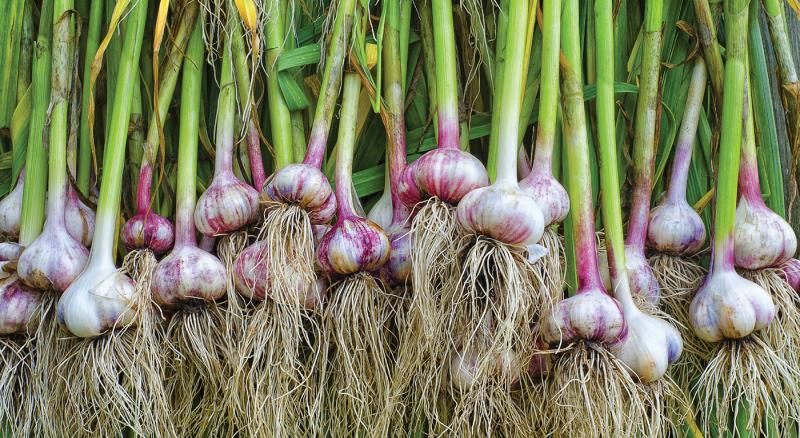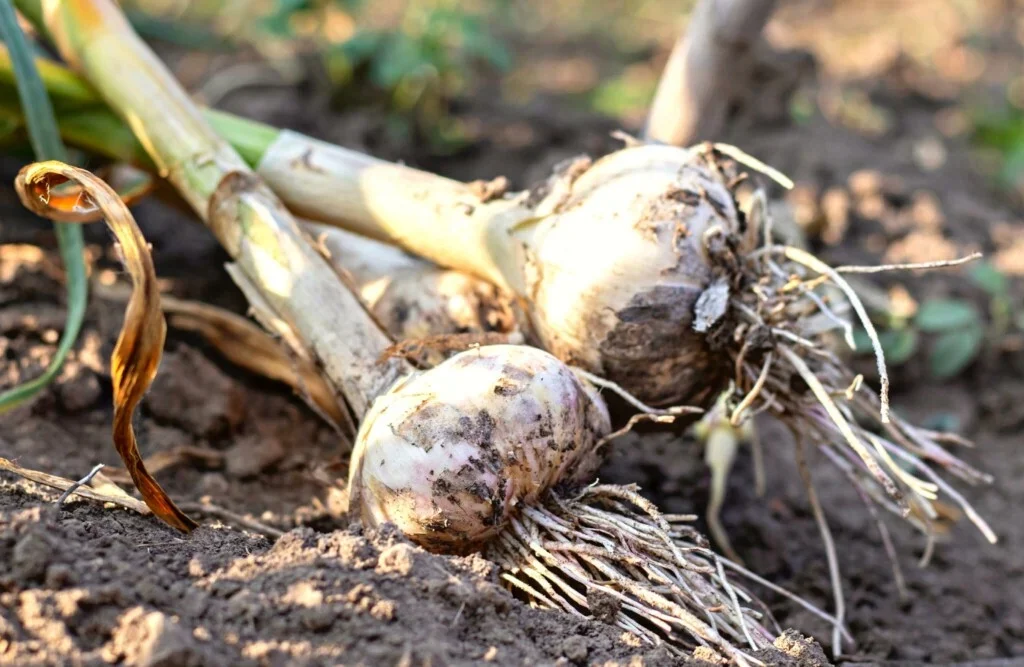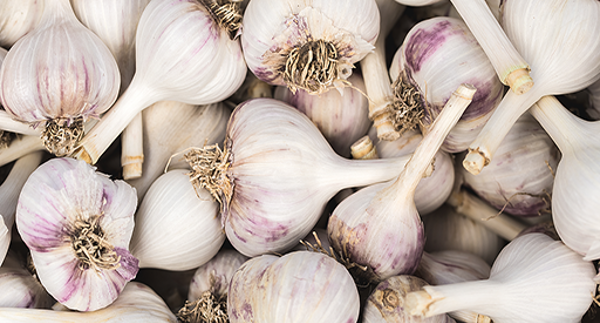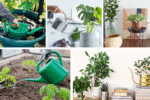Garlic is one of the most indispensable ingredients in kitchens around the world. From pastas and sauces to soups and roasted vegetables, garlic adds bold flavor and depth to a variety of dishes. And the best part? It’s incredibly easy to grow at home — even if you’re new to gardening!
In this detailed, beginner-friendly guide, you’ll learn how to start growing garlic from planting to harvesting, curing, and storing. Whether you have a backyard garden, a raised bed, or a few containers on your balcony, you can enjoy a steady supply of fresh, homegrown garlic with minimal effort.

Why Grow Your Own Garlic?
There’s something special about harvesting your own fresh garlic bulbs — and it’s not just about the taste.
Benefits of Growing Garlic:
- Low-maintenance and beginner-friendly
- Pest-resistant and hardy
- Rich in antioxidants and natural antibiotics
- Stores well for several months
- Can be grown in the ground, raised beds, or containers
Plus, homegrown garlic is often more flavorful and aromatic than store-bought options.

Types of Garlic You Can Grow
Before planting, it’s essential to pick the right garlic variety for your climate and culinary preferences. There are two main types:
1. Hardneck Garlic
- Grows a stiff, woody stalk (called a scape)
- Produces fewer but larger cloves
- Tolerates cold climates better
- Milder, complex flavor
- Examples: Rocambole, Purple Stripe, Porcelain
2. Softneck Garlic
- Flexible stems, often braided for storage
- More cloves per bulb
- Grows well in mild climates
- Longer shelf life
- Examples: Silverskin, Artichoke
Pro Tip: If you live in a northern region with harsh winters, go for hardneck varieties. In warmer southern areas, softneck types thrive better.

When to Plant Garlic
Garlic is typically planted in the fall and harvested the following summer.
- In cold climates: Plant in late September to early November, about 4-6 weeks before the ground freezes.
- In warm climates: Plant in late fall or early winter when temperatures start cooling down.
Why plant in fall?
Fall planting allows garlic to establish roots before winter dormancy. As soon as spring arrives, it resumes growth and develops large, flavorful bulbs.

How to Start Growing Garlic
1. Choose Healthy Seed Garlic
For the best results, use high-quality, disease-free seed garlic from a garden center or seed supplier — not supermarket garlic, which may be treated to prevent sprouting.
- Select firm, plump bulbs with tight skins.
- Avoid any cloves that are soft, shriveled, or moldy.
2. Prepare the Soil
Garlic thrives in loose, fertile, well-draining soil with a pH of 6.0–7.0.
- Work in plenty of compost or well-rotted manure before planting.
- Avoid heavy clay or waterlogged soils, which can cause rot.
- Raised beds or containers with good drainage are great alternatives.
3. Separate the Cloves
Carefully break the bulb into individual cloves, leaving the papery skins intact.
Pro Tip: Plant only the largest, healthiest cloves — these will produce the biggest bulbs.

How to Plant Garlic
Planting Depth and Spacing:
- Plant cloves 2–3 inches deep with the pointed end facing up.
- Space cloves 4–6 inches apart in rows spaced 12 inches apart.
Cover the cloves with soil and gently firm it down.
Mulching:
- After planting, apply a 3–4 inch layer of mulch (like straw or shredded leaves) to insulate against winter cold and suppress weeds.

Watering and Fertilizing
Watering:
- Keep soil consistently moist but not soggy.
- Reduce watering as the tops begin to yellow in late spring.
Fertilizing:
- Garlic benefits from a high-nitrogen fertilizer (like blood meal or fish emulsion) applied in early spring when new growth emerges.
- Side-dress again mid-season to encourage bulb development.
Common Pests and Problems
Garlic is relatively pest- and disease-resistant, but keep an eye out for:
| Problem | Cause | Solution |
|---|---|---|
| Garlic rust | Fungal disease | Remove infected leaves, avoid overhead watering |
| White rot | Soil-borne fungus | Rotate crops, avoid planting garlic in same spot for 4+ years |
| Onion maggots | Larvae in soil | Use row covers, practice crop rotation |
Companion Planting with Garlic
Garlic not only repels pests from other crops but also benefits from strategic companion planting.
Good companions:
- Carrots
- Beets
- Lettuce
- Tomatoes
- Strawberries
Avoid planting near:
- Beans
- Peas
Harvesting Garlic
When to Harvest:
Garlic is typically ready to harvest in early to mid-summer when:
- The lower leaves turn yellow and dry.
- The upper leaves remain green.
Pro Tip: Don’t wait for all leaves to die back, or the cloves may split and reduce storage life.
How to Harvest:
- Use a garden fork to gently lift bulbs from the soil.
- Handle carefully to avoid bruising.
Curing and Storing Garlic
Curing:
- Lay garlic in a warm, dry, shady, well-ventilated area (like a shed or garage) for 2–3 weeks.
- Hang in bundles or spread out on a screen.
- Leave the leaves and roots intact during curing.
Cleaning:
- Once cured, trim the roots and cut stems to 1–2 inches (or braid softneck varieties).
Storage:
- Store in a cool (50–60°F), dry, dark place with good air circulation.
- Avoid refrigeration as it encourages sprouting.
Storage Life:
- Softneck garlic: 6–9 months
- Hardneck garlic: 3–6 months
Growing Garlic in Containers
Garlic grows surprisingly well in pots and containers if space is limited.
Container Tips:
- Use pots at least 8–10 inches deep.
- Provide loose, fertile, well-draining soil.
- Space cloves 3–4 inches apart.
- Keep soil consistently moist and place in full sun.
Final Growing Tips
- Rotate garlic crops each year to avoid soil-borne diseases.
- Mulch well in winter for insulation.
- Remove flower stalks (scapes) from hardneck varieties in early summer to direct energy into bulb growth.
- Save the largest bulbs from each harvest as seed stock for next season.
Conclusion
Learning how to start growing garlic is a rewarding, beginner-friendly gardening project that pays off in big ways. With minimal space, effort, and a bit of patience, you can enjoy flavorful, homegrown garlic right from your garden or balcony.
Whether you prefer the robust character of hardneck garlic or the long storage life of softneck varieties, growing your own garlic is one of the simplest and most satisfying ways to enhance your kitchen and your health.
So grab a few bulbs this fall — your future self (and your recipes) will thank you!





